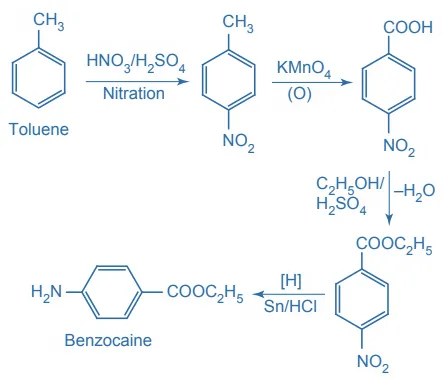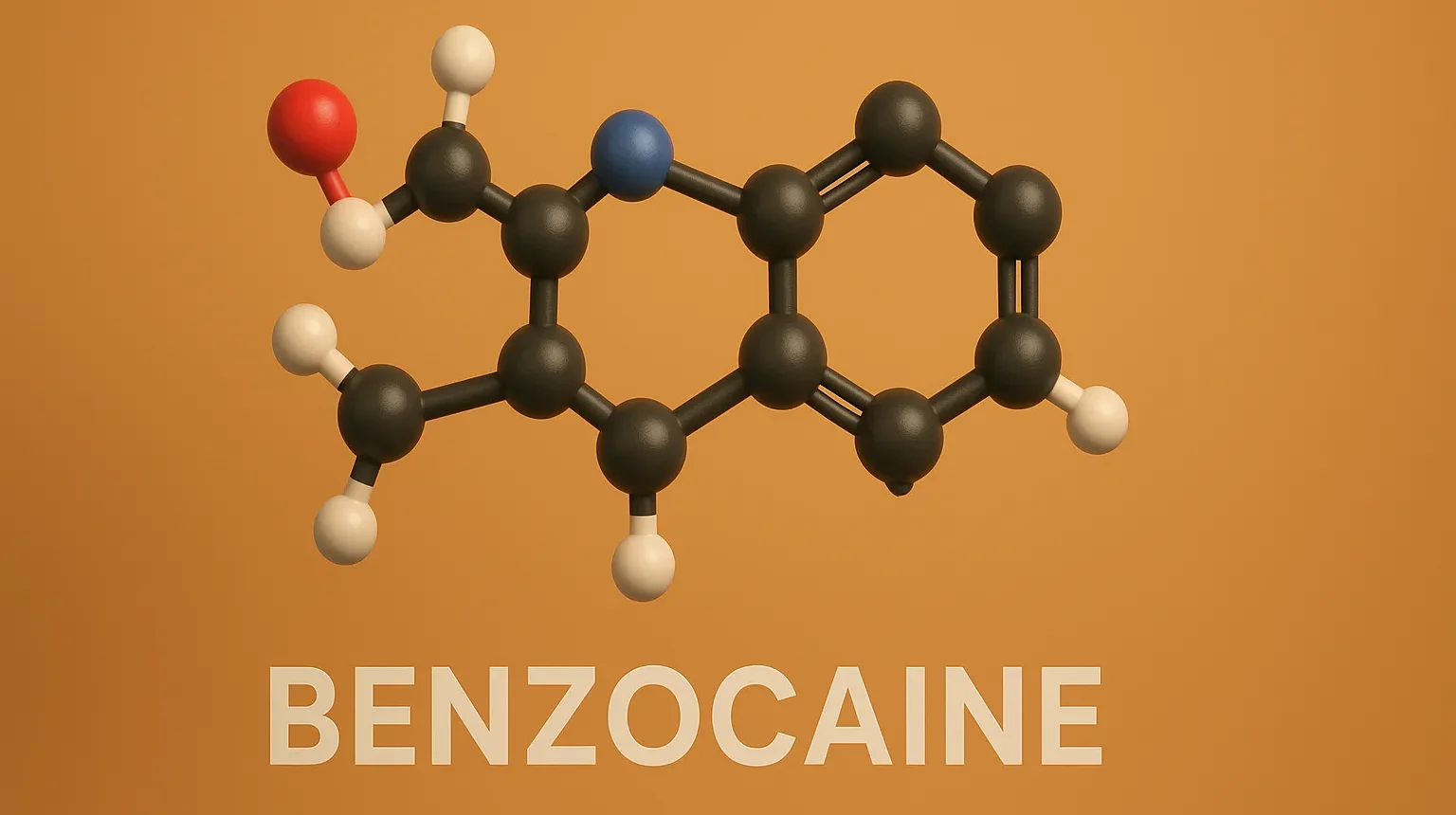Benzocaine is an ester-type local anesthetic commonly used topically to relieve pain and itching by blocking nerve signals.
Structure of Benzocaine
- Benzocaine is a simple amino benzoic acid derivative with a diethylamino group attached to the benzene ring, enhancing its lipophilicity and anesthetic properties.
- Chemical Formula: C₇H₉NO₂

Mode of Action
- Sodium Channel Blockade: Inhibits voltage-gated sodium channels, preventing nerve impulse conduction.
- Membrane Stabilization: Alters nerve membrane permeability, reducing excitability.
Uses
- Topical Anesthesia: Applied to mucous membranes, skin, and minor cuts for numbing.
- Oral Preparations: Used in throat lozenges and sprays to alleviate sore throat pain.
- Dental Anesthesia: Utilized in gels and creams for minor dental procedures.
Structure-Activity Relationship (SAR)
- Diethylamino Group: Increases lipophilicity, enhancing membrane permeability and anesthetic potency.
- Ester Group: Facilitates rapid hydrolysis and onset of action.
- Benzene Ring Substitution: Modifications can affect duration and potency of anesthesia.
Synthesis of Benzocaine


